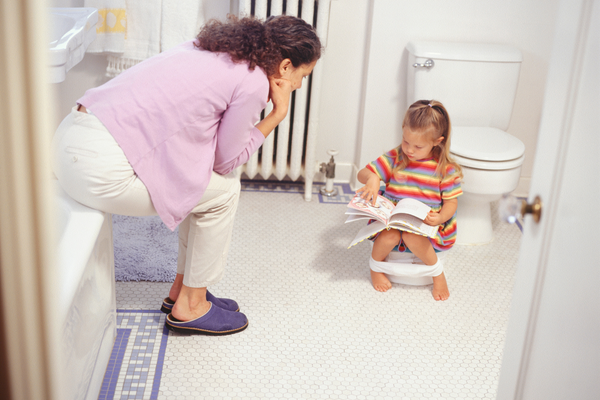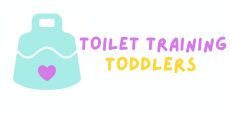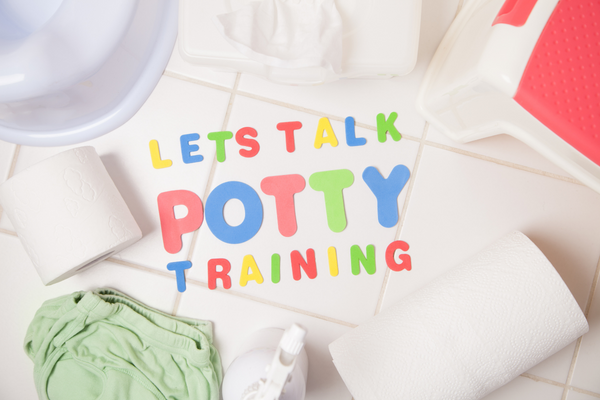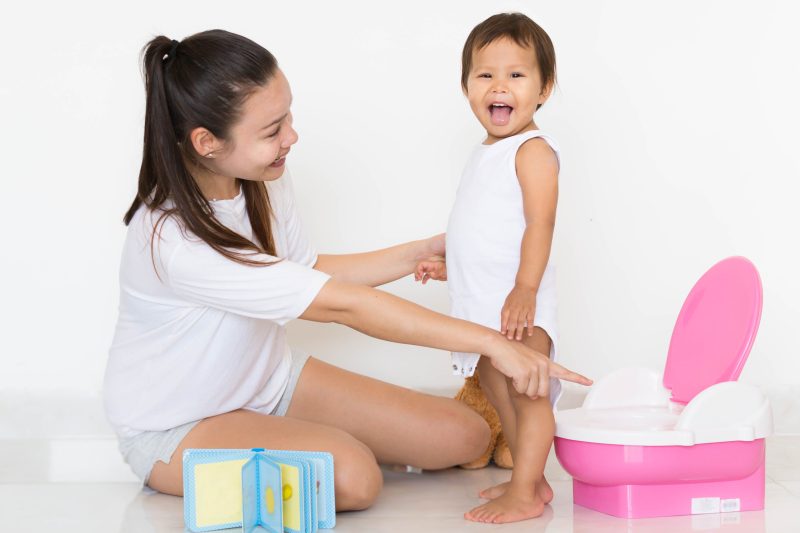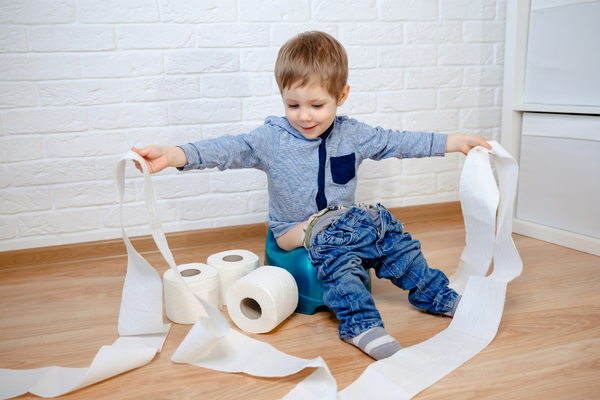The thought of potty training your child can be pretty daunting, but no one needs that kind of pressure when they go to the toilet!
I mean, have you tried to pee in a quiet bathroom with someone in the stall next to you?
Now imagine how your toddler feels having you hovering whenever they even think about needing the toilet.
Potty training requires patience, empathy, and readiness; finding that balance can be tricky.
But don’t worry – just know that no matter what your journey looks like, you will get through it, and your child will not be wearing diapers forever!
Disclaimer: This blog post contains affiliate links . If you use them, we might be rewarded credit or a commission of the sale. Please note that we only recommend tools that we personally use and love and we always have our readers’ best interest at heart.
What Age Do I Have to Start Potty Training?
There’s no right or wrong starting age, but typically, children are potty trained between 18 months and 3 years old.
It all depends on your child’s readiness, your readiness as a parent, and timing (yes, you’ll have to devote some time to this!).
How Do I Know If My Child is Ready to Potty Train?
There are a few things you can look for that will let you know your child is open to the idea of potty training. Just remember, they might show all the signs but still need more time to fully master the process.
Signs Your Child May Be Ready to Potty Train
- Shows an interest in wanting to use the potty or toilet
- Refuses to wear diapers (or tries to take them off during the day)
- May ask to wear underwear
Pre-Potty Training Tips
1. Communication
Start talking about potty training and toilet habits naturally and normally.
You can familiarize your child with bathroom habits by including them in yours. Your child probably spends a lot of time with you in the bathroom already, so chat with them about what you are doing.
For example:
“One day, you’re not going to wear diapers anymore! You’ll get to wear undies like Mommy.”
“Mommy goes to the toilet to do poos and wees.”
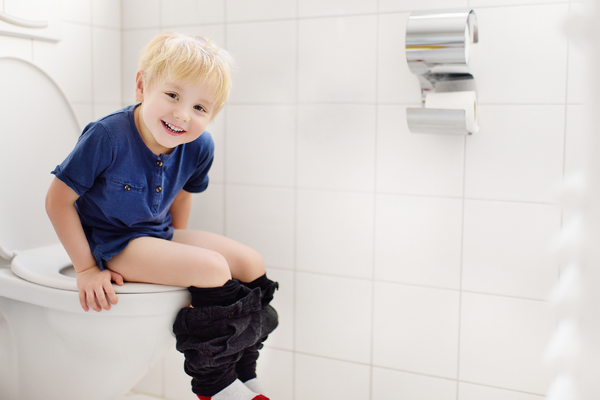
2. Buy the Necessary Accessories
Buy a potty or a toilet seat attachment and allow them to get familiar with it without any expectations or pressure.
Buy underwear with your child’s favorite character (Frozen, Paw Patrol, etc.). Take them shopping with you and let them pick them out. Get them excited to start!
3. Set an Example
Allow your child to watch you go to the toilet. Yes, that means for number 1s and 2s!
It might sound embarrassing, but your child has probably been doing it already. Motherhood seems to mean a serious lack of bathroom boundaries.
The more your child sees that going to the toilet is an everyday experience, the easier it will be for them to grasp the concept and be okay with going.
When your child has a dirty nappy, let them help you empty it into the toilet, so they understand where poop goes.
4. Assess the Timing
If you’re about to move house, have a baby, or are going on a holiday anytime soon, it’s best to put potty training on hold, as these significant life events can impact your child’s success.
It’s best to allow 6-8 weeks of no big commitments before starting potty training.
My Child is Showing Interest, Now What?
If your child is showing interest, strap yourself in and get started.
Set a commitment-free date in your calendar, ideally a long weekend (or longer if your schedule allows it). By having a date set at least 2 weeks in advance, you can use this time to talk to your child and get them excited about ditching the diapers.
Do I Need to Start with the Potty, or Can My Child Go Straight to the Toilet?
Starting your child on the potty or toilet is entirely up to you and your child.
A potty can be helpful in the beginning as you can take it with you to different rooms in the house (wherever your child is playing) so they have easy access. Remember, in the beginning, your child won’t have much time between realizing that they need to go and actually going! A potty can help make this successful.
Many parents ditch the potty and have their children start straight on the toilet. After all, if you start with the potty, you will need to eventually get your child familiar with the toilet anyway.
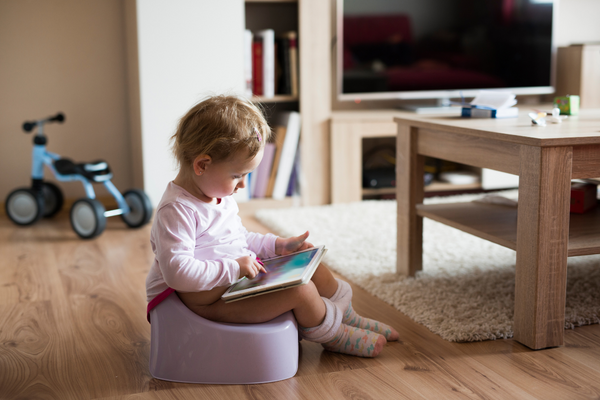
Potty Training – The Actual Process
There are different methods for potty training, and you will need to find the one that best suits your family.
3-Day Potty Training Method
This method involves staying in the house for 3 days with your bare-bummed toddler while they learn to use the toilet/potty.
It’s intense and doesn’t suit every child, but if you are looking for a potty-training boot camp, this might be the method for you.
Child-Led Toilet Training
This method follows your child’s lead and pulls back if they react negatively. There is no timeline, and it gives your child autonomy over the experience.
For this method, you let your child be bare-bummed as often as possible with the potty nearby and allow them to connect what their body needs to do and where they should do it.
Parent-Led Toilet Training
This method is hands-on and requires you to be very observant of your child.
When you notice your child needs to go, you remove their diaper and put them on the potty. You then encourage them to use the potty and reward them if they do.
You can check in with them throughout the day and ask them if they want to use the potty.
Elimination Communication
Also known as Infant Potty Training, this method involves using cues, signals, and your own intuition when it comes to your little one needing to eliminate their waste. It can take longer than typical potty training methods, although it is one that can create a deep connection with your child and understanding their body signals.
Potty Training is Personal
The potty training journey is unique for each family, and actually, you can have different experiences with each of your children.
Try not to put too much pressure on yourself or your child. Instead, approach potty training as an adventure that you get to embark on together.
